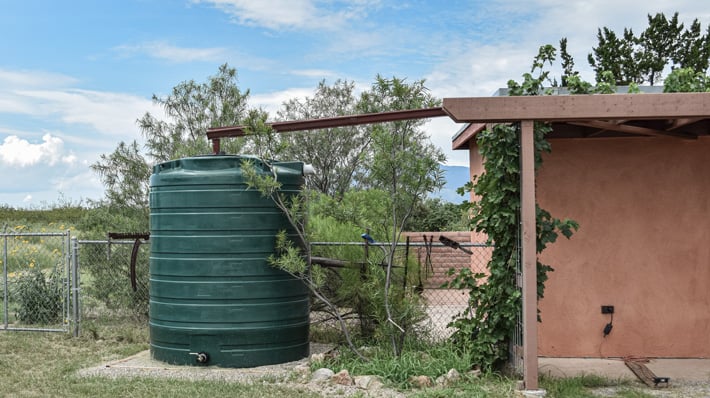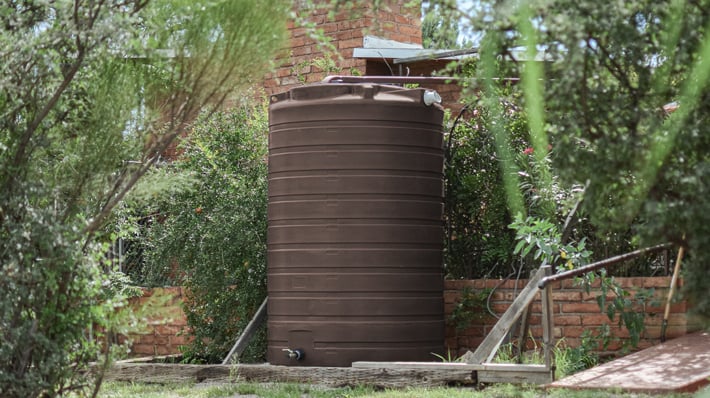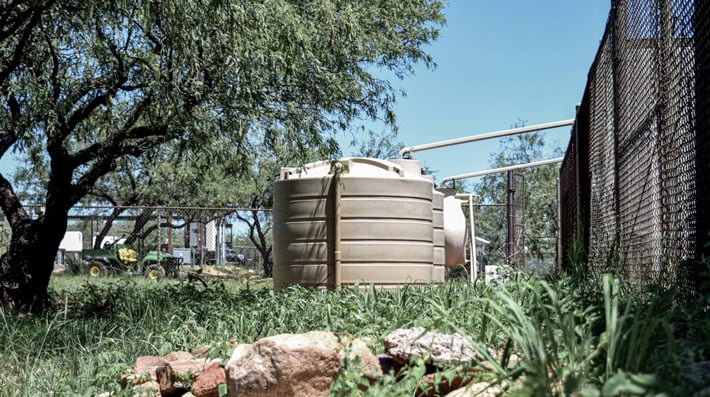
Pinpointing the best place to install your water tank can be frustrating. On the one hand, you want your water system to work seamlessly in your operations and need minimal maintenance. On the other hand, you want to avoid spending a ton of money on installation and maintenance. Here’s everything you need to know to choose the best spot for installing your water tank.
What to Consider

Building Codes and Storage Tanks: Before installing your water storage tank, double-check that you are adhering to your state’s building codes and regulations surrounding water storage. Your state’s .gov website should have these guidelines available. While it might be overly cautious, you can never be too safe when it comes to your water tank investment.
Location Space and Tank Dimensions: This may seem like a no-brainer, but measuring out where your tank will go can save you a lot of frustration before purchasing and installing your water tank. Be sure to give your water tank plenty of space on all sides, so you have easy access for routine maintenance. Having your tank too close to buildings, trees, etc. can be problematic later down the line.
Assess Your Catchment System Before Installation: Take the time to monitor your water catchment system before setting up your water tank. Locating the side of your roof that catches the most rainwater during storms can be great for your water investment. An above-ground tank gives you the freedom to move it where it can be best utilized (just make sure it has a proper base)
Algae Growth: If your tank doesn’t have LIGHT-BLOCK™ technology, then you must position your water tank in a place that will avoid direct sunlight. Finding a shaded area for your tank will help keep the water cool and discourage algae growth. A good tip to remember is this: algae needs light energy to grow. The more sunlight there is the higher chance for algae to sustain life. Algae can contaminate your entire water supply and harm humans, pets, and plants.
Plumbing & Location

Deciding whether or not you will use a dry or wet water system will also determine where you will put your tank.
Using a dry system will save you time and money and allow you more freedom to change the position of your tank later down the line. However, your tank will still need to be positioned close to your roof to capture the rainwater from gutters or another catchment system. While the installation will be quick and easy, having exposed piping can be problematic later.
On the other hand, using a wet system will allow you to place your tank away from your roof. However, the installation will take twice as long because you’ll have to bury the piping from your catchment system underground. While it might look neater and be more streamlined in the long run, it’ll take time and money to get it exactly how you want it. Not to mention that your tank's position will be permanent.
Related Content: Enduraplas vs 500 lb Man
Requirements For Your Water Tank Position
Regardless of where you decide to put your water storage tank, every spot must have all three:
- A stable base for your water tank to live on
Wherever you decide to put your tank, there must be a stable, reinforced base that can withstand the full weight of your tank. - Is as close to your catchment surface as possible
Having your tank close to your catchment surface not only reduces the amount of effort that goes into your plumping, but it ensures that you are getting as much water as possible from the source. - Avoids tight spaces, dry areas, and direct sunlight
Allow yourself enough room to access your water tank. Avoid dry spaces so you can collect the most water as possible. Avoid sunlight due to algae growth. All algae needs to grow in your tank is sunlight, so make sure your tank has LIGHT-BLOCK™ technology.
Following these guidelines will save you time, stress, and money when setting up your tank. Need help preparing a proper base for your water tank? Don't worry, there are six helpful tips to know when preparing a base for your water tank. This article has everything you need to know to protect your water investment.



